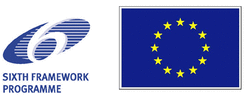European Partnership in Polar Climate Science (PolarCLIMATE)
The Programme Board recommended six PolarCLIMATE proposals for funding. The proposals are spread across the three research themes and represent a near balance between the Arctic and the Antarctic. |
IMCOAST
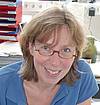
Project Coordinator: Dr. Doris Abele (Alfred-Wegener Institute for Polar and Marine Research, Germany)
Title: Impact of climate induced glacier melt on marine coastal systems in the West Antarctic Peninsula region
Abstract: IMCOAST is an interdisciplinary, innovative research project, linking causes and effects within the presently observed rapid climate change in the marine coastal environment of the Antarctic Peninsula. IMCOAST builds directly on IPY-34 clicOPEN (climate change in coastal areas of the Antarctic Peninsula), and is planned as a high-resolution investigation focusing on 2 pilot areas King-George Island (KGI). The study site excels through its unique facilities with 9 permanent research stations and a strong background of information on coastal system status and functioning during the past 15 – 50 years (pending on the type of data). In an integrated, novel approach the team of glaciologists, geochemists, geologists and biologists will study the hierarchical chain of impacts produced by regional warming, the retreat of glaciers on the coastal sedimentary environment, patterns of deposition and sediment transport to the open ocean. Effects of changes in run-off and suspended matter will be linked to the observed shifts in the coastal biosphere, including experimental cause-effect studies of water column and benthic systems. The JRP will also evaluate impact and strength of late Holocene warm phases on the KGI coastal system. A central aim and legacy in IMCOAST will be a joint database for archiving IMCOAST and IPY-34, as well as related KGI data sets, following commonly accepted data archiving and access standards. IMCOAST will strengthen the European and international cooperation since partners from 9 European and 3 South American institutions are involved, each with long standing experience in Antarctic research or with important novel techniques, and by a unique regional data interface.
Principal Investigators/Associated Partners: PIs: Dr. Matthias Braun (University of Bonn), Professor M Del Carmen Dominguez (Universidad de Salamanca), Dr. Christian Hass (Alfred-Wegener Institute for Polar and Marine Research), Professor Hans Brumsack (University of Oldenburg), Professor Ann Vanreusel (University of Ghent), Professor Anita Buma (University of Groningen), Professor Andrzej Tatur (Polish Academy of Sciences); APs: Professor Jorge Arigony-Neto (Federal University of Rio Grande), Dr. Irene Schloss (Argentine Antarctic Institute), Dr. Eva Philipp (University of Kiel), Dr. Ricardo Sahade (University of Cordoba), Professor Andrzej Tatur (Polish Academy of Sciences), Dr. Stephen Roberts (British Antarctic Survey), Professor Hans Brumsack (University of Oldenburg), Professor Michael Staubwasser (University of Cologne), Dr. Dorothee Wilhelms-Dick (University of Bremen)
CryoCARB
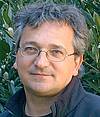
Project Coordinator: Professor Andreas Richter (University of Vienna, Austria)
Title: Long-term Carbon Storage in Cryoturbated Arctic Soils
Abstract: Soil organic carbon (SOC) stored in the permafrost of the Arctic is one of the largest carbon reservoirs globally and is vulnerable to climate change. Despite its undisputed importance, the amount of arctic SOC remains ambiguous and poorly constrained. A significant proportion of this SOC is stored in the subducted organic matter of cryosols, suggesting that cryoturbation (i.e., the mixing of soil layers due to freezing and thawing) is one of the most important mechanisms of arctic carbon sequestration. The major objectives of CryoCARB are therefore (i) to advance organic carbon estimates for cryoturbated soils including the carbon stored in the permafrost, (ii) to identify the major SOC stabilization mechanisms, focusing on organic matter quality, microbial community composition and on abiotic factors, and (iii) to assess the vulnerability of arctic carbon stocks in a future climate. CryoCARB is structured in work packages, dealing with carbon storage in cryoturbated soils (WP1), with quality and degradability of SOC (WP2), with microbial processes and community structure (WP3) and with the integrative modelling of SOC dynamics in cryoturbated soils (WP4). These WPs are linked and integrated by a set of joint sampling campaigns in Siberia (three transects), Greenland and Svalbard and by joint experiments that address the sensitivity of SOC to changing environmental conditions in the laboratory and in the field. The work will be supported by the development of a sound theoretical and conceptual framework and by mathematical modelling. CryoCARB represents a multinational collaboration between 8 European countries and Russia, applying an interdisciplinary approach to address critically important issues that link cryoturbated arctic soils to the global carbon cycle. Such a comprehensive undertaking, from molecular microbiology to landscape level carbon inventories and modelling of circum-arctic carbon storage in future climates, is new and has not yet been implemented anywhere for the Arctic.
Principal Investigators/Associated Partners: PIs: Professor Peter Kuhry (Stockholm University), Professor Georg Guggenberger (Leibniz Universität Hannover), Professor Hana Santruckova (University of South Bohemia (USB) in Ceske Budejovice), Professor Christa Schleper (University of Bergen); APs: Professor Pertti Martikainen (University of Kuopio), Mr. Sergey Zimov (Russian Academy of Sciences), Dr. Anatoly Prokushkin (Russian Academy of Sciences), Professor Davey Jones (Bangor University), Professor Philippe Ciais (Laboratoire des Sciences du Climat et de l’Environnement)
SATICE
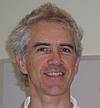
Project Coordinator: Dr. Pedro Elosegui (Institute for Space Sciences, Spain)
Title: Arctic Ocean Sea-ice and Ocean Circulation Changes Using Satellite Methods
Abstract: SATICE will estimate spatio-temporal variations of ocean dynamic topography in the Arctic Ocean, ocean circulation, ocean tides, sea-ice freeboard heights, ice thickness and ice mass balance using in-situ, novel high-precision Global Positioning System (GPS) Observations of sea-ice motions, satellite-based radar and lidar sea-ice altimetry and satellite gravity. It is crucial to monitor these ice and ocean parameters to improve our understanding of the key thermodynamic and dynamic processes that drive the Arctic climate change. These estimates will be used to improve coupled ice-ocean-atmospheric models and Arctic Ocean tide models. The lack of meaningful observational constraints in the Arctic Ocean, which this project will alleviate, currently hampers advancement in model accuracy and development. The combined observational and modeling effort will pave the way in the future for assimilation of satellite- based observations and methods for routine Arctic ice and ocean modeling.
Principal Investigators/Associated Partners: PIs: Professor Rene Forsberg, (Danish National Space Institute), Professor Rüdiger Gerdes (Alfred-Wegener Institute for Polar and Marine Research), Professor Johnny Johannessen (Nansen Centre for Environmental Research), Professor Peter Wadhams (Université Pierre et Marie Curie-Paris), Dr. Jeremy Wilkinson (Scottish Association for Marine Science); APs: Professor Meredith Nettles (Lamont-Doherty Earth Observatory Columbia University), Dr. Laurence Padman (Earth & Space Research)
CLIMSLIP

Project Coordinator: Dr. Andreas Stohl (Norwegian Institute for Air Research, Norway)
Title: Climate impacts of short-lived pollutants in the Polar Regions
Abstract: The CLIMSLIP vision is to understand the radiative forcing in the Arctic caused by Short-Lived Pollutants (SLPs) accurately enough to reliably guide climate policy. The overall CLIMSLIP aim is to reduce uncertainties of the impact of SLPs, particularly of Black Carbon (BC) aerosols, on polar climate. Particular objectives are to: 1.) Improve the quantitative understanding of the source regions of SLPs in Arctic and Antarctic; 2.) Contrast BC concentrations in the air and in the snow in the Arctic and Antarctic; 3.) Determine the removal of (especially BC) particles from the atmosphere via snowfall and by dry deposition; 4.) Determine the ozone formation in anthropogenic and biomass burning plumes being transported into the Arctic; 5.) Assess aerosol-induced direct radiative effects on aerosol radiative forcing in Polar Regions; 6.) Document and quantify snow/ice albedo changes as a result of BC deposition in the Arctic; 7. ) Estimate the impact of the albedo reduction on the Arctic climate; in particular, study whether BC deposition could explain the warmth in the Arctic in the 1930s and 1940s. To achieve these goals, CLIMSLIP will build on measurements obtained at international monitoring stations, on data gathered during the IPY projects POLARCAT and POLAR-AOD, on satellite remote sensing data, on new CLIMSLIP measurements and on various models.
Principal Investigators/Associated Partners: PIs: Ann-Christine Engvall, John Burkhart, Markus Fiebig, Yvan Orsolini (Norwegian Institute for Air Research), Dr. Alexander Kokhanovsky (Universität Bremen), Dr. Andreas Minikin (Deutsches Zentrum für Luft- und Raumfahrt), Professor Peter Tunved (Stockholm University), Dr. Claudio Tomasi (Consiglio Nazionale delle Ricerche, Italy); APs: Dr. Aki Virkkula (University of Helsinki), Dr. Kathy Law (Université Pierre et Marie Curie), Professor Isabelle Bey, (Eidgenoessische Technische Hochschule Zuerich)
HOLOCLIP
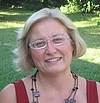
Project Coordinator: Dr. Barbara Stenni (University of Trieste, Italy)
Title: Holocene climate variability at high-southern latitudes: an integrated perspective
Abstract: High-latitudes are particularly interesting places to document natural climate variability since: (1) every component of the climate system interacts in these regions in a still poorly-constrained and non-linear way; (2) changes are amplified compared to low latitude environments; (3) Antarctica and its surrounding are characterized by a strong regional variability. Existing geological records, glacial records and model experiments have highlighted differences in the evolution of the climate as a function of the area. In the framework of the PolarCLIMATE programme, HOLOCLIP aims to bring together the ice core, the sediment core and the modelling scientific communities to understand the processes linking different components of the climate system and linking climatic response to external forcing over the Holocene. The areas on which the European research efforts have been concentrated over the past decades are suited for integrating xisting ice and marine records, in terms of amount and quality of collected materials. Key areas of the Antarctic Ice Sheet and their marine surroundings have been selected: Western Ross Sea, Oates-George V-Adelie Lands including Dome C ice drainage basin, Prydz Bay, Dronning Maud Land and Antarctic Peninsula-Scotia Sea.
Principal Investigators/Associated Partners: PIs: Dr. Xavier Crosta (Université Bordeaux 1), Dr. Hans Oerter (Alfred-Wegener Institute for Polar and Marine Research), Dr. Carlota Escutia Dotti (University of Granada), Dr. Hans Renssen (VU University Amsterdam), Dr. Hugues Goosse (Université Catholique de Louvain), Dr. Jennifer Pike (Cardiff University)
SvalGlac
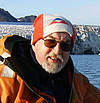

Project coordinator: Prof. Jacek Jania (University of Silesia)
Co-coordinator: Prof. Francisco Navarro (Technical University of Madrid)
Title: Sensitivity of Svalbard glaciers to climate change
Abstract: About 50 % of the glaciated area outside the large ice sheets is located in the Arctic, and they contribute about 30 % to the runoff. IPCC predicts that the largest contribution to global sea level rise will stem from glaciers and ice caps. However, the uncertainties are large, up to 50%. Present estimates of mass balance of Svalbard glaciers are scarce and vary from close to balance to significantly negative.
The dynamic response of the glaciers varies on the different glacier types: 1) Ice caps 2) tidewater glaciers and 3) glaciers ending on land. We will estimate how changes in climate can affect the future mass balance of Svalbard glaciers and, consequently, the contribution to sea-level rise. This will be accomplished through modelling of ice flow, including calving fluxes, supported by field data. The proposed modelling work also includes Regional Climate modelling providing surface mass balance estimates for the whole of Svalbard, surface mass balance modelling for targeted glaciers and sensitivity analysis by different approaches using degree-day and energy balance models as well as couplings to atmosphere, hydrology and dynamics.
A warmer climate may change both surface processes (snow accumulation, internal refreezing, superimposed ice and ablation) and dynamics. Predictions of future mass balance and dynamic response require boundary information about the thermal structure of the ice, the present and past surface mass balance, meteorological data/atmospheric field studies (AWS), surface and bed topography and current flow. These points will be the main focus for the field and remote sensing investigations. Remote sensing data is the only way to get enough spatial data, but must be validated by field data. The above questions are addressed in a set of complementary field, remote sensing and modelling programs.
The main objectives of the project are:
1) To obtain a reliable estimate of the total ice volume stored in Svalbard.
2) To estimate the recent past climate changes and mass balance rates of Svalbard.
3) To improve the process understanding related to mass balance and glacier dynamics.
4) To obtain an updated estimate of the present mass balance of Svalbard glaciers.
5) To model the expected response in surface mass balance and calving flux rate under different scenarios of climate change
Principal Investigators/Associated Partners: PIs: Prof. Jacek Jania, (University of Silesia), Prof. Francisco Navarro (Technical University of Madrid), Prof. Veijo Pohjola, (University of Uppsala), Prof. Dieter Scherer, (Technische Universität, Berlin), Dr. Friedrich Obleitner, (University of Innsbruck), Prof. Rein Vaikmäe, (Tallinn University of Technology), Prof. John Moore, (Arctic Center, Rovaniemi), Dr. Daniela Mansutti, (National Council for Research); APs: Prof. Jon Ove Hagen, (University of Oslo), Dr. Carleen Reijmer, (Utrecht University), Prof. Regine Hock, (University of Alaska), Dr. Andrey Glazovskiy, (Russian Academy of Sciences), Dr. Xiao Cheng, (Beijing Normal University)
